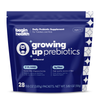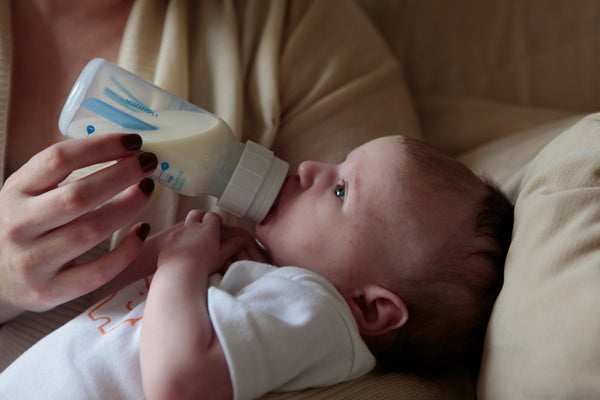Effects of Polyethylene Glycol (PEG) on the Gut Microbiome
share this article

Polyethylene glycol (PEG) is a commonly used laxative, especially known for its support in treating constipation. However, there's growing interest in understanding how PEG affects the gut microbiome, a crucial component of our overall health. In this blog, we will review the effects of PEG on the gut microbiome, specifically in kids.
What is Polyethylene Glycol and How Does it Work?
Polyethylene glycol (PEG) is a synthetic polymer widely used in medical, pharmaceutical, and cosmetic products. In medicine, PEG is often utilized as a laxative under the brand name Miralax, among others. It works by retaining water in the stool, making it easier to pass and thus relieving constipation.
What is the Gut Microbiome?
The gut microbiome consists of trillions of microorganisms, including bacteria, viruses, fungi, and protozoa, residing in the digestive tract. These microorganisms play a vital role in digestion, immunity, and overall health. Maintaining a balanced gut microbiome is essential for preventing various gastrointestinal issues and systemic diseases.
Daily reads to help your little ones lead happier and healthier lives.
Join the
Happy Gut Club
Effects of PEG on the Gut Microbiome
- Alteration of Bacterial Populations: Research published in Gut Microbes found that PEG can alter the composition of the gut microbiome [1]. The study indicated that while PEG effectively relieves constipation, it may also reduce the abundance of certain beneficial bacteria, such as Bifidobacteria and Lactobacilli, which are crucial for maintaining gut health.
- Impact on Microbial Diversity: A study in the Journal of Gastroenterology showed that PEG treatment could lead to a decrease in microbial diversity [2]. Microbial diversity is essential for a resilient and healthy gut environment. The reduction in diversity observed in this study suggests that long-term or excessive use of PEG might negatively impact gut health.
- Temporary vs. Long-term Effects: Another study in Pediatric Research highlighted that the effects of PEG on the gut microbiome might be temporary [3]. The research demonstrated that while there are immediate changes in microbial populations during PEG treatment, the gut microbiome tends to revert to its original state after the cessation of treatment. This suggests that short-term use of PEG might not have lasting adverse effects on gut health.
- Gut Inflammation: A study published in Alimentary Pharmacology & Therapeutics explored the potential inflammatory effects of PEG [4]. The findings indicated that while PEG effectively alleviates constipation, it does not significantly increase markers of inflammation in the gut. This suggests that PEG is relatively safe in terms of not promoting gut inflammation, which is crucial for long-term gut health.
- Metabolic Impact: Research in Nature Microbiology examined the metabolic changes in the gut microbiome due to PEG administration [5]. The study found that PEG treatment could alter the metabolic activity of gut bacteria, affecting the production of short-chain fatty acids (SCFAs) such as butyrate, which are vital for colon health and overall metabolism.
Practical Tips for Parents
For parents considering PEG for their kids, it's essential to weigh the benefits of immediate constipation relief against potential impacts on the gut microbiome. Here are some practical tips:
- Short-term Use: Limiting PEG use to short-term treatment periods can help mitigate potential negative effects on the gut microbiome.
- Monitor Gut Health: Observing your kid’s overall digestive health and consulting with a healthcare professional can ensure that the use of PEG is both effective and safe.
- Balanced Diet: Supporting gut health through a balanced diet rich in fiber, probiotics, and prebiotics can help maintain microbial diversity and resilience.
Summary
PEG is an effective laxative for relieving constipation in kids, but its use can impact the gut microbiome by altering bacterial populations and reducing microbial diversity. These effects are generally temporary, with the gut microbiome often reverting to its original state post-treatment. Parents should consider short-term use and support their kid's gut health with a balanced diet and professional guidance.
















